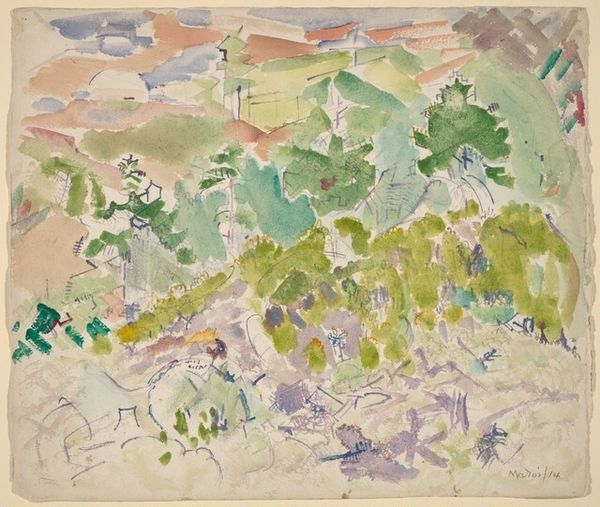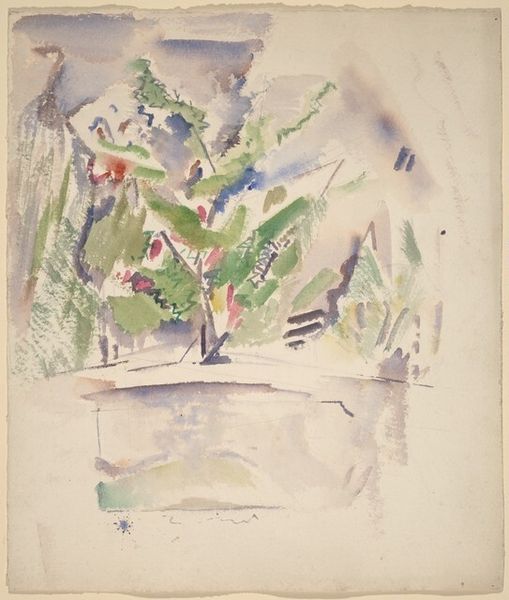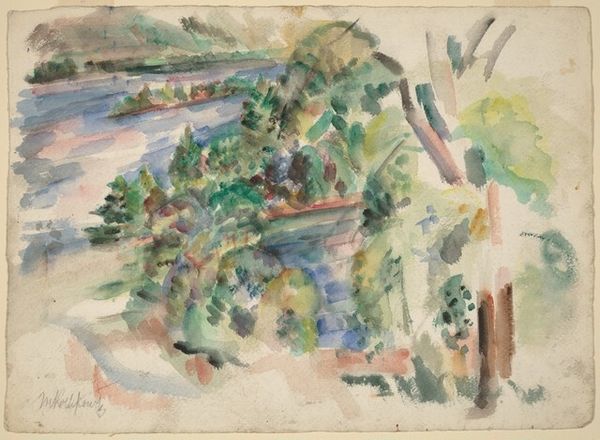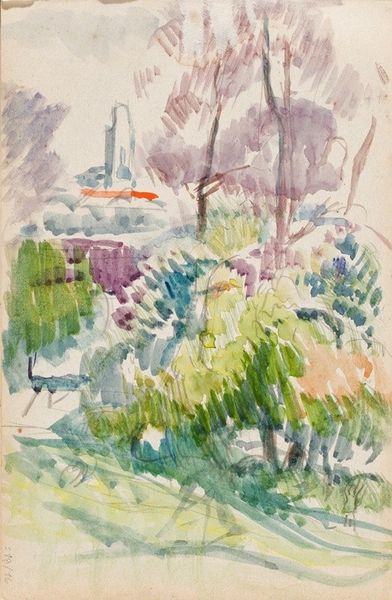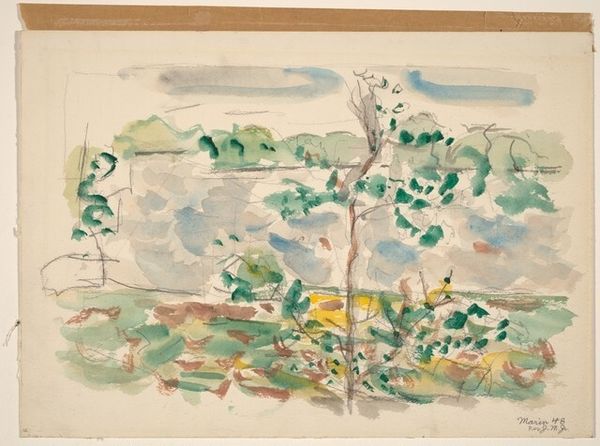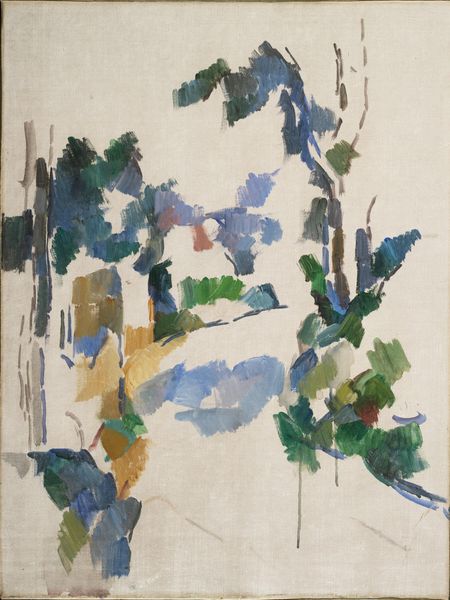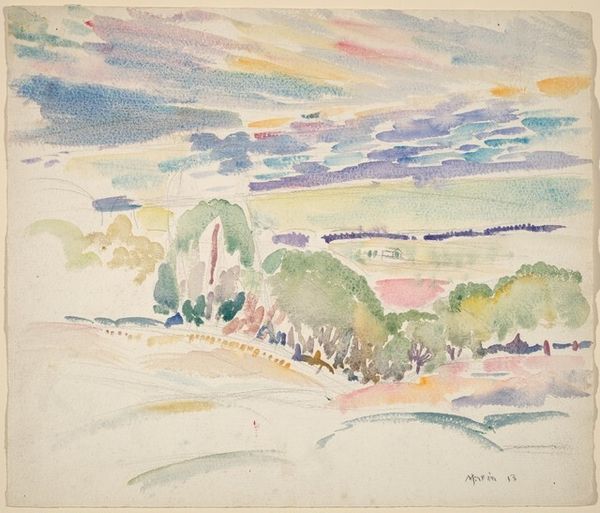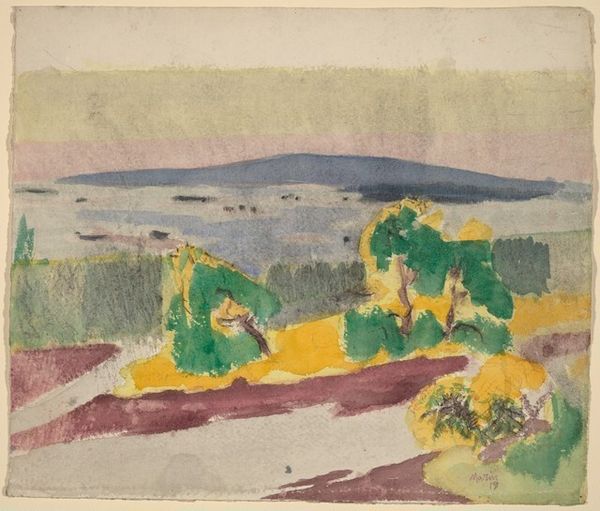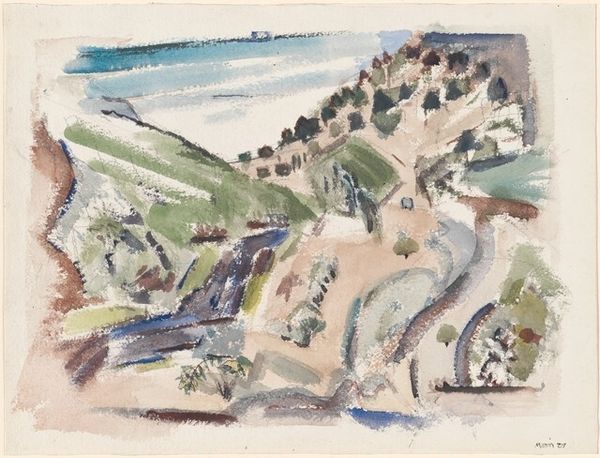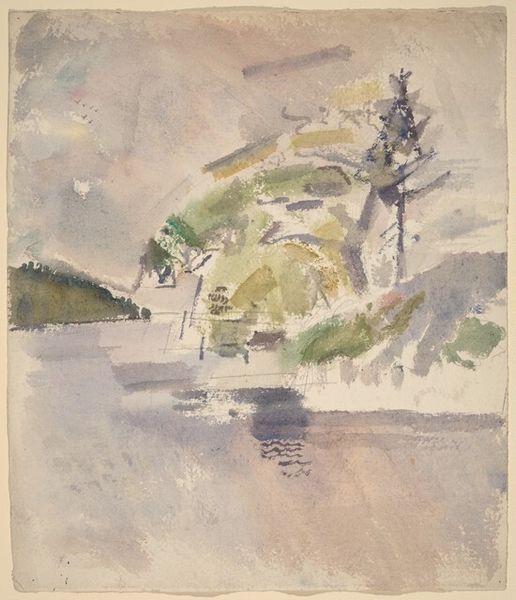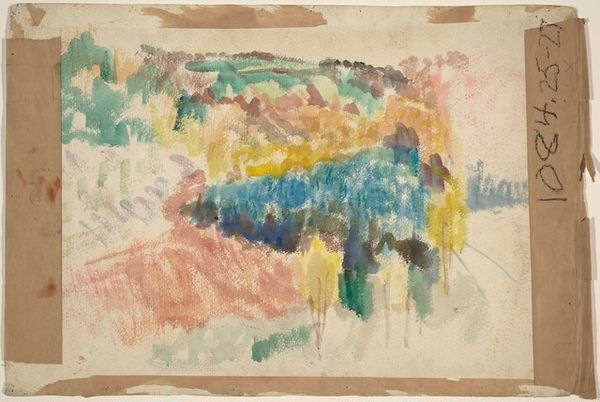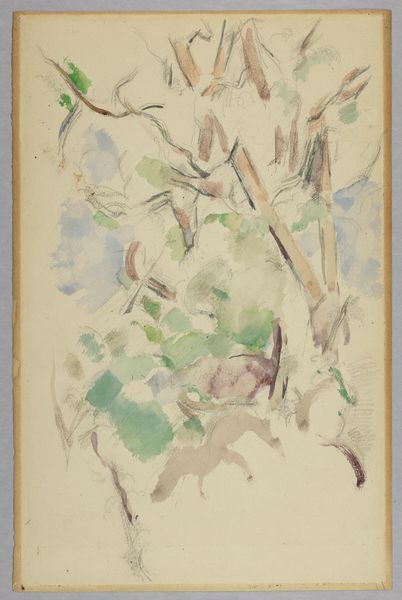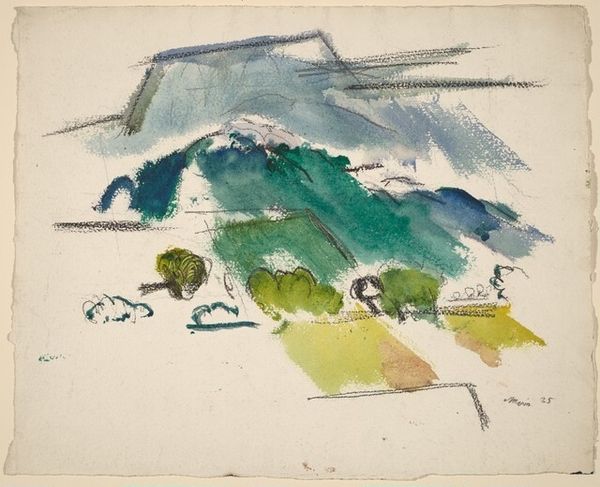
Dimensions: overall: 43.1 x 36.2 cm (16 15/16 x 14 1/4 in.)
Copyright: National Gallery of Art: CC0 1.0
Editor: This is John Marin's "Castorland, New York," a watercolor done in 1913. The colors feel so light and fresh, almost like a dream. It's a scene, but barely there; do you see any specific meaning embedded within this image? Curator: Indeed. Marin presents us with more than just a landscape; it's a feeling of a place. Note how he uses rapid strokes and fractured planes. Doesn't that energetic style evoke the dynamism of early 20th-century America? Editor: I guess, but I didn’t initially consider any hidden symbolism beyond a straightforward landscape painting. Are you suggesting the brushstrokes mirror social change, or is there something else I'm missing? Curator: Consider the deliberate fragmentation, the near-abstraction. Marin is dismantling traditional landscape painting to reflect the modern experience, in which clarity and stability were challenged, even questioned. Even the location—Castorland, New York—evokes the grand but unrealized ambitions of early American settlement. Does the name 'Castorland' suggest anything? Editor: Well, "castor" refers to beavers… land of beavers. Maybe something about human intervention in nature? I see the trees, but now, they appear restless. Curator: Precisely! It shows a dialogue with, and perhaps even a struggle against, the environment. Those fragmented strokes also resemble early Cubist techniques, reflecting an era grappling with shifting perspectives and societal anxieties. He almost makes me recall earlier utopic artistic communities. Editor: So, Marin uses a seemingly simple landscape to portray this larger sense of modern unrest and societal ambition through symbolic gestures and techniques? Curator: Exactly. Through these fragmented forms, Marin not only depicts Castorland but embodies the spirit of a nation in transition. Editor: I definitely see the landscape differently now. I had thought it was only aesthetic, but there's clearly deeper commentary.
Comments
No comments
Be the first to comment and join the conversation on the ultimate creative platform.
